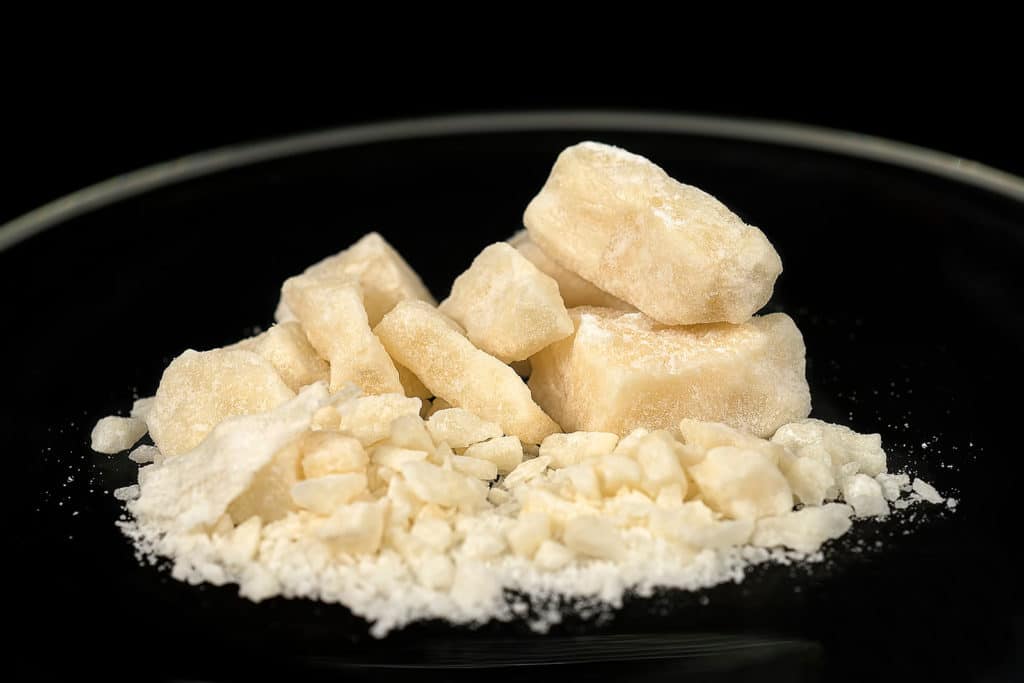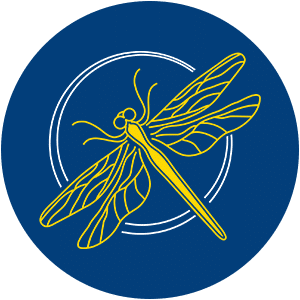By 2022, a little over 10 million people in the US had used crack cocaine at least once in their lifetime.
Do you suspect the crack epidemic affects a loved one? If so, how can you tell for sure?
Not just anyone can diagnose a substance use disorder. However, there are a few visible signs of crack use, from behavior changes to chronic itching. Friends and family can spot these warnings, stage an intervention, and convince the person to get professional help.
In this guide, we’ll discuss the most common signs, the at-risk groups, and what you can do to help someone who’s suffering from crack addiction. We’ll also go over the signs that indicate a possible cocaine overdose.

Table of Contents
Who Can Diagnose Crack Use Disorders and Addiction?
Let’s get one thing out of the way: Only medical professionals can diagnose a cocaine-related substance use disorder.
Usually, they rely on the DSM guidelines to see if a person meets the official criteria of addiction to stimulants, among other illicit substances.
But to convince a loved one to seek professional help, you need to recognize the warning signs.

7 Warning Signs That Someone Is Using Crack Cocaine
Crack use can cause both physical and psychological damage. Some effects might appear shortly, while others take longer to kick in.
High blood pressure, narrowed blood vessels, and heart rate irregularities are all common issues. However, these types of health effects are hard to spot without proper examination.
Instead, you’ll want to keep an eye out for the more apparent signs, including:
1. Various Respiratory Issues
People who abuse crack often smoke the white crystalline substance. Then, it’s absorbed straight from the lungs and into the bloodstream. That’s why smoking crack leads to a quick (but brief) sense of euphoria.
Unfortunately, this route of administration hits the different parts of the respiratory system hard. In fact, it could cause a condition known as “crack lung.”
Crack lung can show up as increased coughing (sometimes with blood), wheezing, chest pain, and difficulty breathing. If left untreated, the condition could escalate to respiratory failure!
2. Visible Signs on the Skin, Eyes, Teeth, and Lips
Lots of illicit substances affect the eyes, either causing redness or altering the pupils’ size. Crack cocaine causes dilated pupils. The eyes aren’t the only visible indicator, though.
For one, the lips might be blistered from smoking crack. So could the fingertips.
Crack users tend to have dermatological issues as well. Severe and chronic itching is the most common (and easily spotted) problem. Itching happens because the drug causes formication tactile hallucinations, where the person feels like bugs are crawling under their skin.
Plus, the person’s oral hygiene might deteriorate since crack cocaine use is associated with a higher risk of tooth loss, dental caries, and periodontal diseases.
3. Ulterted Eating Habits
Nausea and loss of appetite are two signs that a person is using crack cocaine (and stimulant drugs, in general). So, a sudden weight loss is to be expected.
In the long term, these altered eating habits could lead to malnutrition.
4. Bursts of Energy Followed by a Devastating Crash
When someone smokes (freebases) crack, they get an immediate rush, feeling focused, energetic, and euphoric. That’s because crack use releases a lot of dopamine (the feel-good neurotransmitter) in the brain.
But the high lasts for 15 minutes or so.
Once the effects wear off, the person experiences an unpleasant “come down” or “crash.” They’ll feel groggy and tired. That’s when the intense cravings start hitting, and finding the next dose of crack seems like the most important thing in the world to the user.
As a result, you’ll likely notice wild fluctuations in the person’s focus and energy levels. Alternatively, they might get stuck in a binge cycle, trying to maintain the high.
Over time, more of the person’s brain function will be altered. Aside from dopamine, cocaine can also affect glutamate, which is vital for learning and memory. So, it’s not surprising that cocaine abuse is associated with cognitive impairment.
5. Sleep Pattern Distributions
During a crash, the person might sleep longer than usual. Otherwise, stimulant drug use can keep a person up for days at a time.
You need to look for changes in the person’s sleep patterns.
6. Behavioral and Psychological Changes
The use of crack cocaine can change a person’s behavior quickly. Look for erratic, aggressive, and sometimes outright violent behavior for no clear reason.
You might also be aware that your loved one has lost interest in most social interactions. Risky behaviors, hyperactivity, and mood swings are also common signs.
Psychosis, hallucinations, and paranoia are all red flags as well.
7. Ownership of Crack-Use Paraphernalia
Finally, a dead giveaway that your loved one is suffering from a substance use disorder is finding drug paraphernalia in their belongings.
That said, some crack paraphernalia (bowls, cans, lighters, coat hangers, etc.) might go unnoticed for a while if you don’t know what to look for. Keep an eye out for small glass/metal tubes that people use to smoke the crystalline form of cocaine.
Note: Not all crack looks like white rocks. Crack sold on the street might be cut with other dangerous substances that change its appearance.
It’s also wise to familiarize yourself with the street names (like rock) for crack cocaine to see if your loved one talks about any of them.

Identifying the At-Risk Groups
Now, you might be wondering if your loved one is particularly at risk. The thing is, it’s hard to define who’s really at risk of crack abuse.
Some reports indicate that kids as young as 13 are already caught up in this drug addiction epidemic.
Meanwhile, the SAMHSA’s 2022 National Survey on Drug Use and Health breaks down the use of crack in particular (and cocaine in general) into demographics based on age.
Here are the highlights of the findings:
| Demographic/Illicit Substance | Cocaine | Crack |
| 12 or Older | 1.9% (5.3 million people) | 0.3% (918,000 people) |
| 18–25 | 3.7% (1.3 million people) | 0.1% (39,000 people) |
| 26 or Older | 1.8% (3.9 million people) | 0.4% (877,000 people) |
You can see that the highest calculated percentage of crack use in 2022 was among adults at least 26 years old.

What to Do if You Suspect a Loved One Is Using Crack Cocaine
Did you notice enough signs of crack cocaine addiction in a friend or a family member?
We know the initial shock can be overwhelming, but you need to calm down and think about the best way to help your loved one.
1. Consult a Professional
First things first, you need to get in touch with a medical professional. They won’t be able to confirm the diagnosis without examining the patient.
However, they could provide educational resources and maybe even recommend a nearby addiction treatment center with a detox facility.
Once you know the available hospitalization and treatment options, you can start planning an intervention.
2. Stage an Intervention
Crack use can rewire the brain to compulsively seek the next high. That’s why convincing someone that they need help won’t be easy, even if you have family members on your side.
If you don’t think you confront them properly, consider hiring an intervention specialist.
3. Join a Support Group
From overcoming the cocaine withdrawal symptoms to working on relapse prevention, the recovery journey will be long and hard on your loved one. They’ll need your continuous support through all the ups and downs.
However, you also need a bit of support. After all, the journey can take its toll on your mental health and well-being.
Joining a local support program for families in a similar situation can go a long way. If that’s not possible for logistical reasons, you can still attend virtual meetings.

Knowing the Warning Signs of a Crack Overdose
Not all families will be lucky enough to notice the signs of abuse early on. Some will only get to spot the drastic warning signs of an overdose (OD), including:
- Fever
- Sweating
- Delirium and hallucinations
- Losing consciousness
- Difficulty breathing
- Seizing
Reacting Quickly
As always, the best thing to do in emergencies is to dial 911 and stay with your loved one until the help arrives.
Don’t hang up the phone while you wait for the first responders. If there’s anything you can do to help, the operator will walk you through the steps.
For instance, if your loved one is seizing, they might direct you to remove sharp objects from the area and roll the person onto their side.

Final Thoughts
Violence, cardiovascular disease, respiratory failure, and ODs—the crack addiction road can be ugly and deadly. However, help is available in the form of cocaine addiction treatment programs.
If you believe someone you know and care about is suffering from a substance use issue, don’t hesitate to get in touch.
Additional Resources
- Cocaine Anonymous (CA) state directory | Chicago, Illinois: (312) 834-3784
- SAMHSA’s Substance Abuse Treatment: A Booklet for Families
- NIDA’s Cocaine/Crack: Abuse and Addiction
- Illinois Department of Human Services: Facts You Should Know About Crack



